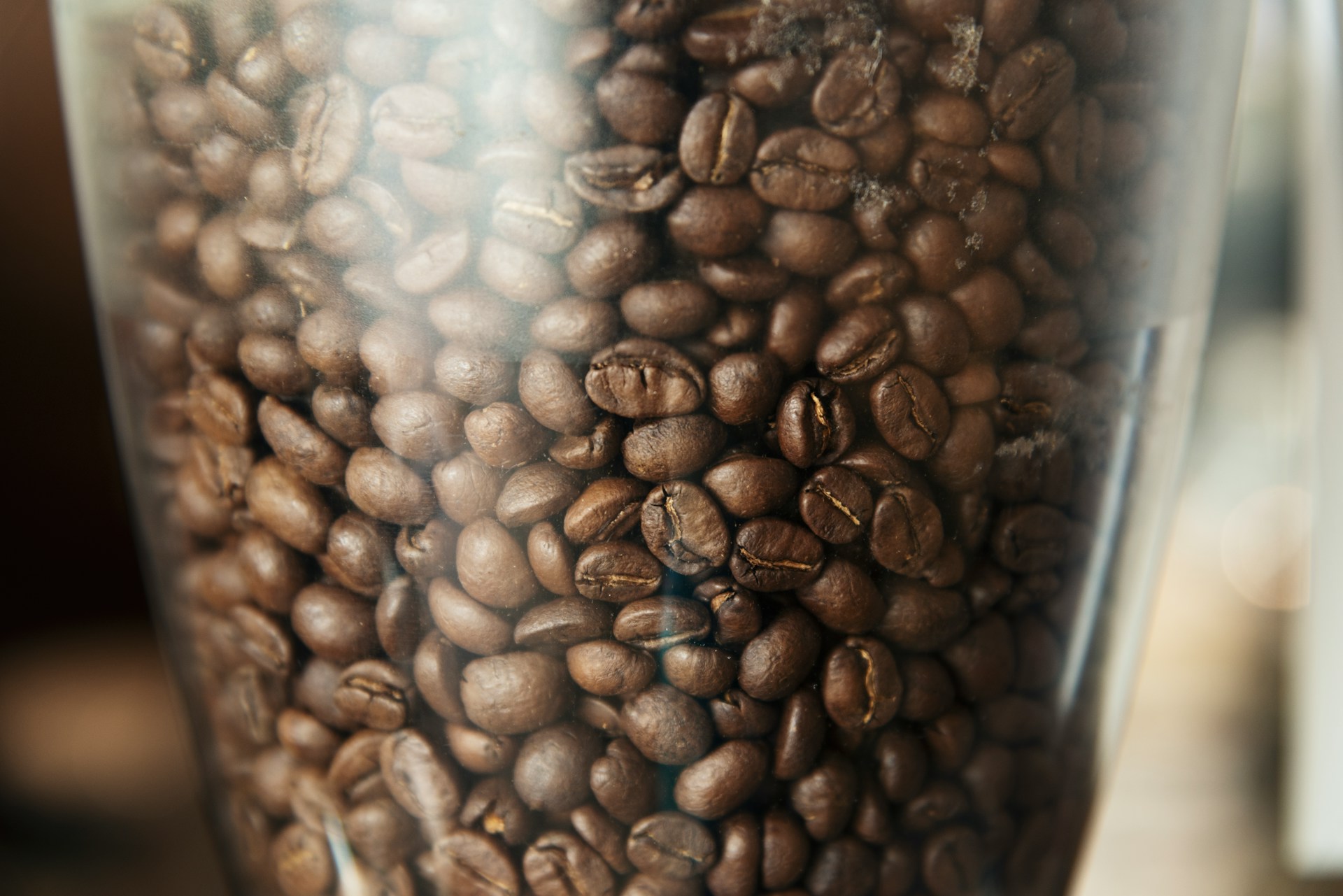When you buy coffee online, the coffee bean label becomes your only guide to what’s inside the bag. There’s no chance to smell the beans, feel the texture, or ask someone behind the counter for suggestions. Everything comes down to reading between the lines or more accurately, reading the fine print on the label. For seasoned coffee drinkers, that might be second nature. But if you’re newer to specialty coffee or just trying to make better choices, that label can look like a mix of fancy terms and confusing codes.
The good news is, once you understand a few key points, reading coffee bean labels gets a lot easier. You’ll start to notice patterns, pick up on language that matches your taste, and feel way more confident when ordering coffee online. Whether you’re looking for something that matches your everyday brew or you’re exploring new flavors from different regions, having a basic understanding of what those labels actually mean makes a big difference.
Understanding Coffee Bean Origins
One of the first things you’ll see on a coffee label is where the beans come from. Origin tells you where the coffee was grown, and that location has a big effect on how the coffee will taste. Geography impacts climate, altitude, and soil, the three elements that shape the flavor of each crop. Whether the beans come from Kenya, Colombia, Ethiopia, or Brazil, each growing region brings something different to the table.
Here’s a quick breakdown of what some common origins usually suggest in terms of flavor:
– Ethiopia: Often bright, floral, and citrusy
– Colombia: Smooth and balanced, sometimes with chocolate or nut notes
– Brazil: Typically lower in acidity, more body, and deeper flavors like cocoa or caramel
– Kenya: Tangy and juicy, often with berry or wine-like qualities
Single-origin coffees, which come from one specific farm or cooperative, give you a clear sense of that place. Meanwhile, blends combine beans from multiple regions, creating a more balanced or layered flavor.
It’s kind of like fruit. An apple from Washington might taste different from one grown in New York. Coffee works the same way. Understanding origin won’t just help you find new favorites. It’ll also help you avoid beans that might not fit your personal taste.
Decoding Roast Levels
Right next to or below the origin information, you’ll usually see a roast level. This tells you how long and how hot the beans were roasted. Roast level changes everything, including flavor, aroma, and the feel of the coffee on your tongue.
Here’s a quick guide to what each roast level usually offers:
1. Light Roast
– Higher acidity, brighter taste
– You often taste more of the bean’s original character like fruit or floral notes
– Best for those who want a clean and crisp cup
2. Medium Roast
– Balanced body and flavor
– Slight sweetness and a bit more depth than light roast
– Great middle ground if you’re not sure where to start
3. Dark Roast
– Bolder, heavier, and sometimes a little smoky
– Often has chocolate, spice, or roasted nut flavors
– Little to no acidity, great for those who prefer a rich cup
The roast also affects how you brew. Light and medium roasts tend to shine in pour-over setups because they let those subtle notes stand out. Darker roasts hold up well in drip machines or espresso setups where you want body and punch over nuance.
Choosing the right roast can take some trial and error. If you aren’t sure yet what you like, medium roast is a safe place to start. Later, you can explore lighter roasts for something more delicate or dark roasts if you like bold flavor.
Grind Size And Brew Methods
Grind size isn’t always listed on a coffee bag, but it’s still important to know how it connects to your brew method. If you’re buying whole beans online, you’re in charge of the grind. That’s a good thing. Grinding fresh right before you brew brings out more flavor. But to get the results you want, you’ve got to match your grind to the brewing gear you use.
Here’s a general guide to help you pair the right grind size with your brewing method:
– Extra Fine: Almost powdery. Works best with Turkish coffee or certain espresso machines.
– Fine: Soft and slightly gritty. Best for most home espresso makers and some moka pots.
– Medium-Fine: Feels like sand. Great for AeroPress and slightly richer pour-over brews.
– Medium: Like beach sand. A reliable choice for drip coffee makers and standard pour-over setups.
– Medium-Coarse: Gritty but still loose. A good fit for Chemex brewers.
– Coarse: More like sea salt. Best used with French press or cold brew setups.
Let’s say you grind coffee too fine for a French press. It can end up muddy and over-extracted. Go too coarse with an espresso machine and you’ll get a weak, sour shot. Matching grind size with your method doesn’t need to be exact to the millimeter, but getting close makes a big difference.
If you’re ordering pre-ground beans, always check if the brand offers grind options tailored to your preferred brewing style. That small detail on the product page can save a lot of time and make the cup taste better from the first sip.
Understanding Specialty Coffee Certifications
When reading a coffee label online, you might come across a few badges or stamps near the bottom or side of the packaging images. These certifications may look tiny, but they carry some weight. They tell another part of the story behind the beans you’re about to buy, how they were grown, traded, or processed.
Here are a few of the most common certifications:
1. Organic – The beans were grown without synthetic pesticides or fertilizers. For many buyers, Organic signals a cleaner farming process.
2. Fair Trade – Focuses on fair wages and safe conditions for the farmers involved. It often means the producer received a minimum price to support sustainability.
3. Rainforest Alliance – A mix of environmental, social, and economic standards. Coffee with this label comes from farms that protect natural resources and worker rights.
4. Direct Trade – While not an official certification, it means the coffee roaster bought the beans straight from the producer, often leading to better quality control and higher pay for growers.
Certifications aren’t the only way to judge a coffee’s impact, but they can help you make decisions that align with your values. If you’re aiming to buy coffee online that supports ethical or sustainable systems, it’s worth scanning the label for these details.
Making Coffee Part of Your Routine
Reading coffee labels isn’t about memorizing every possible flavor note or mouthfeel description. It’s really about learning your preferences, figuring out what matters to you, and being able to quickly tell if a bag of beans matches those wants. Once you understand how origin, roast level, grind size, and certifications connect to flavor and feel, you’re a lot more prepared to shop with confidence.
For coffee lovers looking to discover new favorites, these label details help turn each cup into something worth slowing down for. That’s the best part of buying coffee online. You can explore options from places you’ve never been, try beans roasted in different ways, and zero in on that one roast that just hits right every time.
The next time you scroll through your favorite online coffee shop, don’t feel overwhelmed by the labels. They’re your guide, not a quiz. With a little practice, you’ll know exactly what to look for and your morning brew will taste even better for it.
To fully enjoy the adventure of discovering new flavors, understanding your preferences and finding the right beans is key. Whenever you’re ready to elevate your coffee-drinking experience, you can conveniently explore specialty options when you decide to buy coffee online through Jet Coffee. Let our carefully sourced beans transform your mornings and bring joy to your daily coffee ritual.



